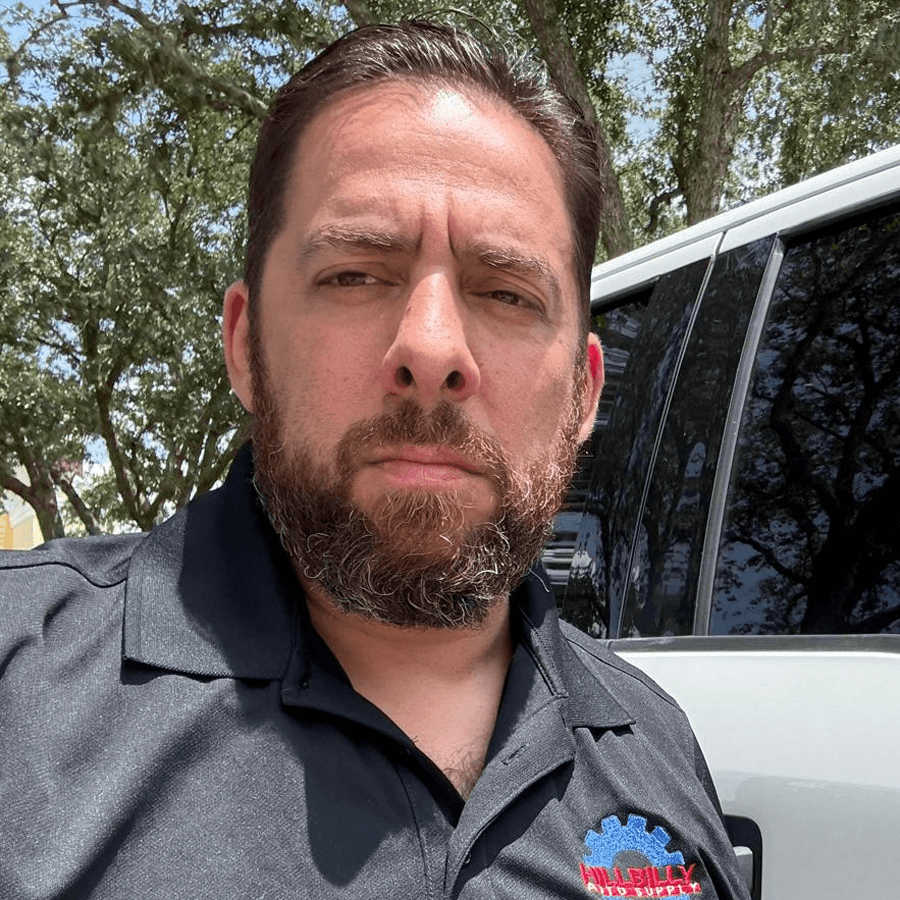No products in the cart.
Top 5 Signs Your Ford Powerstroke Turbocharger Needs Replacing
If you own a Ford Powerstroke diesel, your turbocharger is essential for power and efficiency, especially when towing or hauling. Over time, wear and tear can cause turbo failure, leading to sluggish performance and potential engine damage. Fortunately, your truck will show warning signs before complete failure. Recognizing these early can help you avoid costly repairs and breakdowns. When issues arise, replacing worn-out Ford Powerstroke parts, like a failing turbo, is crucial for maintaining peak performance. In this blog, we’ll cover the top five signs that indicate your Powerstroke turbo needs replacing—so you can keep your truck running strong.
1.Excessive Exhaust Smoke
One of the first signs of something wrong with your turbocharger is unusual exhaust smoke. Usually, diesel engines release a small amount of smoke, but a bad turbo can cause excessive blue, white, or black smoke. Each color tells a different story about what’s happening inside your exhaust system and engine.
- Blue smoke: This usually means your turbo is leaking engine oil into the combustion chamber. Since turbos operate at extremely high speeds, their internal seals can wear out over time, allowing oil to seep through. When this oil burns, it creates blue smoke that exits through the exhaust.
- White smoke: This often indicates a coolant leak inside the turbo, which could mean the housing has developed cracks. If left unchecked, it could lead to engine overheating and more severe damage.
- Black smoke: A failing turbo can disrupt the air-to-fuel ratio, reducing engine power and leading to excessive fuel consumption. When too much fuel burns without enough air, black smoke pours from the exhaust.
If you notice unusual exhaust smoke, it’s best to inspect the turbo immediately. Driving with a failing turbo can worsen the problem and lead to expensive engine repairs.
2.Loss of Power and Poor Acceleration
Your Powerstroke engine depends on the turbocharger to deliver consistent power. If you notice a significant drop in acceleration or sluggish performance, your turbo could be on its last legs. A blown turbo can no longer generate the required boost pressure, causing your truck to struggle, especially when towing or driving uphill.
A failing turbo also disrupts the exhaust gas recirculation (EGR) system, which relies on adequately controlled exhaust gases to reduce emissions. Excess exhaust buildup can further impact performance if the turbo isn’t working correctly. In severe cases, your truck may enter limp mode, where the engine reduces power output to prevent further damage.
Another contributing factor to power loss is a malfunctioning air pump, which helps regulate airflow into the engine. If the turbo or air pump is failing, you may notice sluggish throttle response and reduced efficiency. One way to check for turbo-related power loss is by listening for the whoosh of air that a properly functioning turbo makes when accelerating. If this sound is weak or missing, your turbo might not be working efficiently.
Ignoring power loss can lead to long-term engine stress, as your Powerstroke will have to work harder to compensate for the lack of turbo boost. Addressing turbo issues early can prevent additional damage to your engine and exhaust system. Hillbilly Auto Supply Can Help – Learn How We Source and Stock High-Quality Ford Parts Locally and Nationally!
3.Loud Whining or Screeching Noises
A high-pitched whining, screeching, or grinding noise from your engine bay is another clear sign of turbo trouble. A healthy turbo whistles slightly as it spools up, but excessive noise often means something is wrong. When a turbo fails, it affects fuel efficiency by reducing the amount of air that enters the engine’s cylinders, leading to poor combustion and decreased performance.
- Whining or siren-like noise: This usually indicates worn-out bearings inside the turbo. These bearings help the turbine and compressor spin at high speeds (sometimes over 100,000 RPM). Once they wear out, the turbo starts making a loud whine, which can also contribute to oil leaks due to seal degradation.
- Screeching or grinding noise: This could be caused by a damaged compressor or turbine blades. If foreign objects like dirt, dust, or small debris enter the turbo, they can chip or bend the blades, leading to poor performance, loud sounds, and reduced fuel efficiency.
- Rattling or metallic noise: If you hear a loose, rattling sound, the turbo’s internal components might be failing. This could be due to cracked housings or broken parts inside the turbo, leading to oil leaks and further engine issues.
If your turbo is making unusual noises, it’s best to inspect it as soon as possible. Continuing to drive with a damaged turbo could result in a complete failure, leaving you stranded on the road and potentially causing serious damage to your engine’s cylinders.
4.Check Engine Light and Boost Pressure Issues
Modern diesel engines are equipped with sensors that monitor turbocharger performance. If your turbo starts to fail, the Check Engine Light (CEL) may turn on, signaling an issue with boost pressure and overall engine efficiency. A failing turbo means you need more power for acceleration and towing, leading to reduced fuel economy as your engine works harder to compensate for the loss.
A common diagnostic trouble code (DTC) related to turbo failure is P0299 – Turbocharger Underboost Condition. This means your turbo isn’t providing enough boost pressure to the engine. Other error codes related to turbo problems include P2262 (turbo boost pressure not detected) and P2263 (turbocharger system performance issue).
Boost pressure issues can also be caused by:
- A leaking intercooler or boost pipes, reducing airflow efficiency.
- A worn-out wastegate actuator, which regulates turbo pressure and prevents over-boosting.
- Carbon buildup inside the turbo, restricting airflow and further lowering efficiency.
Additionally, turbo problems can contribute to oil leaks, as failing seals allow oil to escape into the intake or exhaust system. If your truck feels sluggish, struggles to maintain speed, or the check engine light is on, you should run a diagnostic scan to check for turbo-related fault codes and address the issue before it worsens.
5.Increased Oil Consumption and Leaks
Turbochargers rely on engine oil for lubrication and cooling. If your Powerstroke is suddenly burning more oil or you notice oil leaks around the turbo housing, it could mean the turbo seals have failed. This common issue often signals the need for a new turbo to restore proper performance.
Over time, the intense heat and pressure inside the turbocharger can cause seals and gaskets to wear out, leading to oil leaks. This can result in:
- Oil pooling near the turbo
- Dripping oil under your truck
- Low oil levels despite regular top-ups
If a turbo starts consuming too much oil, it can also lead to oil starvation, causing even more serious engine damage. Replacing a failing turbo with a brand-new turbo not only restores power but also ensures reliability, often backed by a manufacturer’s warranty. Regularly checking your oil levels and inspecting for leaks can help prevent power loss and avoid turning a minor turbo issue into a costly engine rebuild.
Restore Your Powerstroke’s Performance with a New Turbo!
At Hillbilly Auto Supply, we offer high-performance replacement turbos designed to restore your truck’s power and reliability. If your Powerstroke turbo shows signs of failure, check out our selection of OEM and aftermarket turbochargers today! We offer high-quality Ford Powerstroke parts backed by reliability and performance you can trust! Shop our inventory now!

Jack’s been wrenching since before he could spell “carburetor,” back when his science fair project was keeping a ’79 C10 on the road with nothing but snow in the bed and pure stubbornness. He’s swapped rancid Hyundais for pocket change, sent trucks flying off-road like they were auditioning for a Dukes of Hazzard reboot, and once thawed a diesel tank with plywood, lighter fluid, and what he swears was “innovative engineering.” These days, Jack channels that same hillbilly wizardry into Hillbilly Auto Supply, your one-stop shop for quality used Ford Super Duty truck parts. If it’s built Ford tough, Jack will make it tougher so your Powerstroke rig continues to haul freedom down the highway.
Subscribe to the Hillbilly Newsletter
Research
Looking for Help to do something? Search our Articles.
Can't find what you need?
Contact us and we'll get one written.

